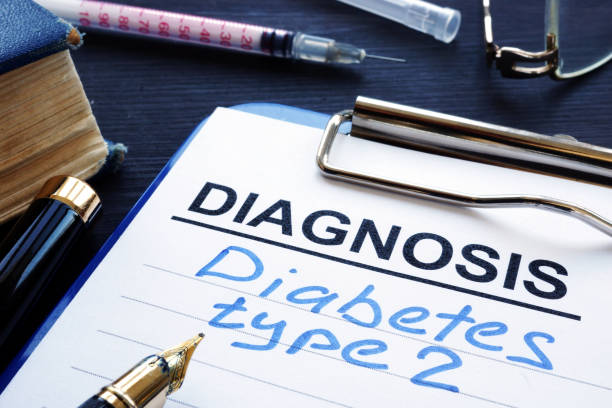Physical Address
304 North Cardinal St.
Dorchester Center, MA 02124
Physical Address
304 North Cardinal St.
Dorchester Center, MA 02124

Nutrition is an essential part of a healthy lifestyle when you have diabetes. Following a healthy meal plan and being active can help keep your blood glucose level, also called blood sugar, in your target range. You need to balance what you eat and drink with physical activity and diabetes medicine, if you take any, to manage your blood glucose.

Becoming more active and changing what you eat and drink can initially seem challenging. Starting small and getting help from your family, friends, and the health care team can help significantly.

High cholesterol levels and diabetes raise your risk of heart attack and stroke.
Diabetes damages the lining of your arteries. This means it’s more likely that cholesterol will stick to them, making them narrow or even blocked.
If you have diabetes, you will usually have lower levels of good cholesterol and higher levels of bad cholesterol. This is commonly called ‘dyslipidemia’ and means your arteries are more likely to become narrow or blocked.

Treating diabetes and cholesterol lowers your risk of heart attacks and strokes.
People with diabetes should keep their cholesterol levels within a healthy range, which is often a lower level than most people.
Type 2 diabetes often goes hand-in-hand with unhealthy cholesterol levels. Even someone with diabetes who has reasonable control of their blood glucose is likely to develop any or all of several cholesterol problems that increase the risk of atherosclerosis and other cardiovascular problems than healthy people.

If you have diabetes, you might have made changes to your diet and lifestyle targeted at keeping your blood glucose (blood sugar) levels steady. But given the increased risk of heart problems associated with diabetes, you may also want to take action to keep your cholesterol levels stable as well.
Many people who have high blood sugar also have high cholesterol levels. However, the good news is that both can be managed with a healthy diet. Cutting out refined carbohydrates and eating whole foods can help you lower these markers simultaneously.

Fat is necessary for energy and hormone production, vitamin absorption, maintaining the membrane integrity of every cell in our body, growth, and development.
Cutting out sources of fat totally from diet to reduce cholesterol levels is something many people do. However, research shows that eating healthy fats like nuts, seeds, fatty fish, avocados and olive oil can help reduce low-density lipoproteins (bad) cholesterol, increase high-density lipoproteins (good) cholesterol, and improve blood sugar control.

Physical activity burns calories, which is why exercise is always recommended as part of a weight-loss plan—particularly for someone with diabetes.
Exercise has also been found to help lower total cholesterol levels.
In studies, a combination of aerobic exercise and strength training has been found to be ideal.
Added sugars such as those found in ice creams, sweetened beverages, and candy negatively impact your cholesterol and blood sugar levels.

Carbohydrates in foods, such as starches, fruits, and milk, cause elevations in blood sugar. To control blood sugar and limit the risk of heart disease, people with diabetes need to manage the number of carbohydrates consumed at each meal.
Recipe 1
Breakfast (314 calories, 33g carbohydrate)
Morning Snack (206 calories, 7g carbohydrate)
Recipe 2
Breakfast (298 calories, 36g carbohydrate)
Morning Snack (258 calories, 18g carbohydrate)
Recipe 3
Breakfast (293 calories, 21g carbohydrate)
Morning Snack (206 calories, 7g carbohydrate)
Recipe 4
Breakfast (298 calories, 36g carbohydrate)
Morning Snack (324 calories, 19g carbohydrate)
Recipe 5
Breakfast (314 calories, 33g carbohydrate)
Morning Snack (266 calories, 12g carbohydrate)
Diet high in saturated fat increase blood cholesterol levels. Animal protein and fat are the primary sources of saturated fat. People with diabetes should choose lean cuts of meat and low-fat or fat-free dairy products to limit their intake of saturated fat.
Recipe 1
Lunch (330 calories, 47g carbohydrate)
Afternoon Snack (132 calories, 13g carbohydrate)
Recipe 2
Lunch (407 calories, 28g carbohydrate)
Afternoon Snack (95 calories, 25g carbohydrate)
Recipe 3
Lunch (407 calories, 28g carbohydrate)
Afternoon Snack (179 calories, 14g carbohydrate)
Recipe 4
Lunch (407 calories, 28g carbohydrate)
Afternoon Snack (32 calories, 7g carbohydrate)
Recipe 5
Lunch (383 calories, 34g carbohydrate)
Afternoon Snack (124 calories, 13g carbohydrate)
Read these also:
Green, leafy vegetables are full of essential vitamins, nutrients, and minerals; in addition, they have a minimal impact on blood sugar levels.
The American Diabetes Association reports that a diet high in polyunsaturated and monounsaturated fats can improve blood sugar control and lipids in people with diabetes.
Certain fish types are a rich source of both polyunsaturated and monounsaturated fats. These include salmon, mackerel, sardines, albacore tuna, herring, and trout.
Recipe 1
Dinner (512 calories, 24g carbohydrate)
Recipe 2
Dinner (448 calories, 37g carbohydrate)
Recipe 3
Dinner (432 calories, 41g carbohydrate)
Recipe 4
Dinner (439 calories, 35g carbohydrate)
Recipe 5
Dinner (428 calories, 51g carbohydrate)
Get the complete meal plan list at eating-well site.

Although diabetes and high cholesterol can often occur together, there are ways to manage both conditions. Maintaining a healthy lifestyle and monitoring your cholesterol levels when you have diabetes are essential ways of managing both conditions.
Using turmeric for high cholesterol is beneficial because it contains a compound called curcumin. Curcumin has been proven to lower LDL cholesterol and prevent oxidation, suppressing plaque build-up in arteries.
Chicken or turkey breasts without skin, beef round, sirloin, or tenderloin. Avoid highly processed meats (bacon, ham, lunchmeat, etc.).
Eating cucumber can lower high cholesterol levels in the body.